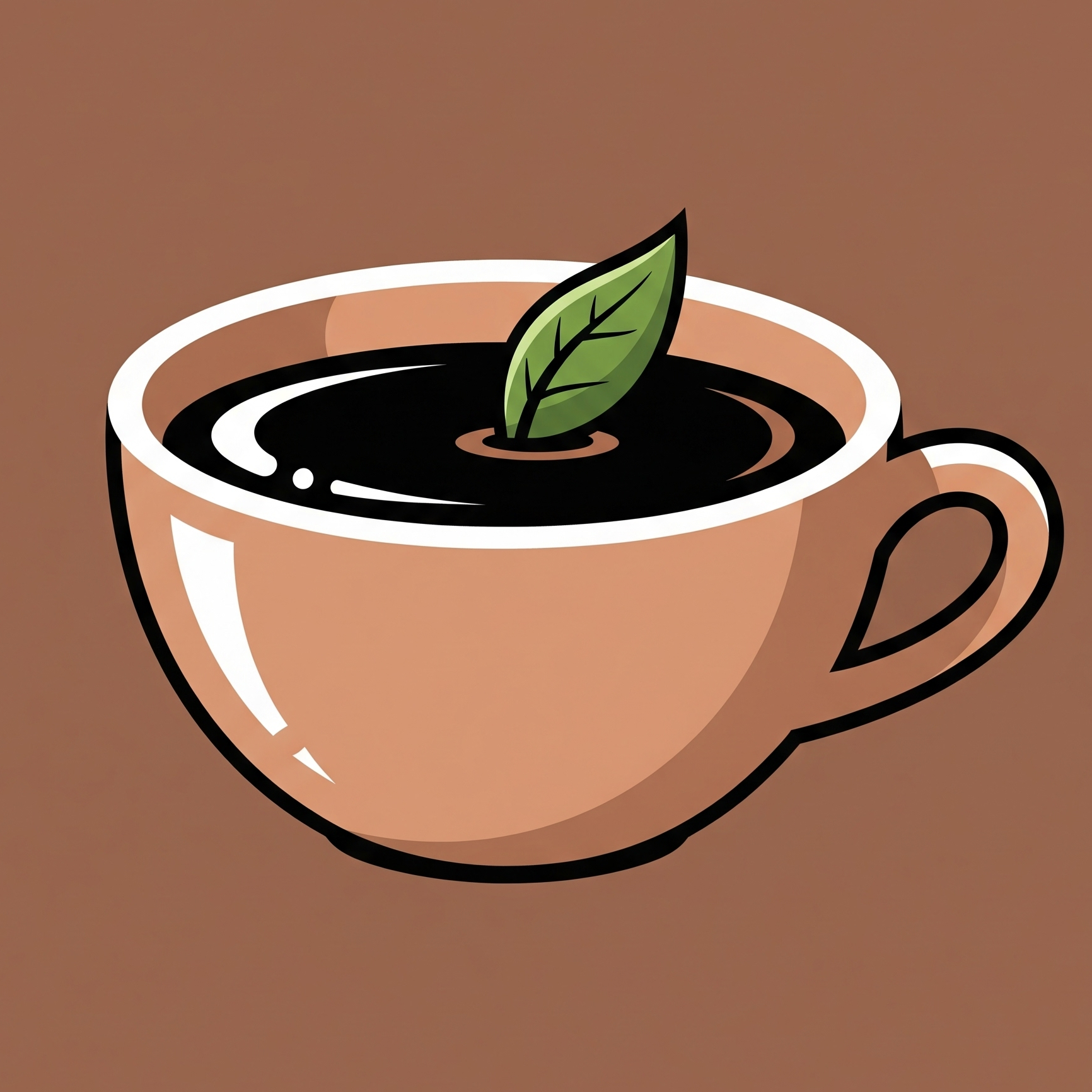An Introduction to Black Tea

For a good portion of the planet, the day doesn’t officially start until a mug of black tea is involved. It’s our collective kick-start, our comfort in a crisis, our go-to afternoon pick-me-up.
But let’s not pretend all black teas are created equal. That sad little paper bag floating limply in your mug has a story, but it’s probably not a very exciting one. We’re here for the good stuff—the tea with history, personality, and a flavor that actually makes you pause. To get there, you first need to understand where it sits in the great tea family tree.
A Spectrum of Color: Where Black Tea Fits In
First, a quick PSA: All true tea—white, green, oolong, and black—comes from the exact same plant, Camellia sinensis. The diversity comes down to how the leaves are handled post-pluck. Think of it as a spectrum of oxidation.
White & Green Tea (The Control Freaks): On one end, you have teas where oxidation is the enemy. Green tea is heated moments after harvesting to shut that process down, locking in its fresh, vegetal, and sometimes aggressively grassy notes. White tea is even more hands-off—just plucked and air-dried.
Oolong Tea (The Complex Middle Child): Oolongs are the “it’s complicated” of the tea world, sitting somewhere between green and black. They’re partially oxidized, a process that requires serious skill. They can be light and floral or dark and roasty—they contain multitudes.
Black Tea (The Bold Extrovert): At the far end, we find black tea. Its entire production is a masterclass in encouraging, controlling, and completing the oxidation process. This full transformation creates the deep color and bold, complex flavors it’s famous for.
From Green Leaf to Dark Magic: The Making of Black Tea
So how do you take a perfectly nice green leaf and convince it to become dark, fragrant black tea? With a little tough love.
- Harvesting: It starts with the good stuff—usually the top two tender leaves and a bud, plucked by hand.
- Withering: The leaves are left out to go limp and lose moisture. Think of it as a spa day that makes them soft and pliable.
- Rolling: Now for the roughing-up. The leaves are rolled, twisted, and bruised. This isn’t just for show—it breaks the cell walls and tells the enzymes it’s time to get to work.
- Oxidation: This is where the magic happens. The leaves hang out in a cool, humid room and mingle with oxygen. This step turns the tea dark and develops its robust, malty, and earthy flavor profile.
- Drying: To halt the party at just the right moment, the leaves get hit with hot air. This locks in all that complex flavor and makes it shelf-stable for its journey to your cup.
A Journey Around the World in a Teacup: The Essential Origins
Saying you like “black tea” is like saying you like “red wine.” The where matters as much as the what. While you can find black tea from dozens of countries, these are the big three you need to know.
Assam, India: The Malty Powerhouse This is your daily driver—unapologetically malty, brisk, and strong. Assam is the backbone of nearly every breakfast blend for good reason: it’s built to handle milk and sugar and still punch through with flavor. I’ll always remember a rainy afternoon with friends, the world outside a blur, a pot of Assam steaming between us. Its robust warmth was the perfect companion to our stories—a truly comforting, no-nonsense brew.
Darjeeling, India: The Champagne of Teas If Assam is your dependable best friend, Darjeeling is the glamorous, slightly high-maintenance cousin who visits from the mountains. Famous for its unique muscatel grape-like flavor, it’s lighter, more floral, and frankly, more complex. And yes, it’s worth the fuss.
Ceylon (Sri Lanka): The Bright & Crisp Classic Ceylon tea is the friend who’s always wearing crisp linen and has their life together. It’s defined by clean, bright, and citrusy notes. Its vibrant, uncomplicated character makes it a rockstar iced tea and the perfect canvas for flavors like bergamot in Earl Grey.
Mastering Your Perfect Cup: A Brewer’s Guide
You can buy the fanciest tea in the world, but if you brew it wrong, you’ve just made expensive, bitter water. Let’s not do that.
The Fundamentals
- Water Temperature: Black tea isn’t shy—it needs hot water to open up. Use water just off a boil, around 195-212°F (90-100°C).
- Tea-to-Water Ratio: The golden rule is 1 teaspoon of loose leaf tea per 8 ounces of water. Start there, then adjust to taste.
- Steep Time: This is where the crimes happen. Please, for the love of all that is holy, set a timer. Aim for 3 to 5 minutes. Any longer and you’re not making it “stronger”—you’re just making it angry. And angry tea is bitter tea, full of puckering astringency.
Beyond the Basics: Three Pro Moves
The Cold Brew Method: Want foolproof iced tea that’s naturally sweet and smooth? Put a tablespoon of tea in a quart of cold water. Stick it in the fridge overnight. Strain. Done. It’s almost embarrassingly easy.
The Quick “Awakening” Rinse: Think of this as a splash of cold water to the face for your sleepy tea leaves. Before your main steep, cover the leaves with hot water and immediately pour it off. This little wake-up call makes your first real cup exponentially more aromatic.
Explore Multiple Infusions: Stop thinking of your tea leaves as one-and-done. With good whole-leaf tea, try a series of short steeps—45 seconds, then 60, then 90—on the same leaves. You’ll discover a whole story of evolving flavors you’d otherwise miss.
So the next time you reach for a cup, maybe skip the dusty bag in the back of the cupboard. Try an Assam that demands your attention or a Darjeeling that makes you think. Because life is entirely too short for boring tea.